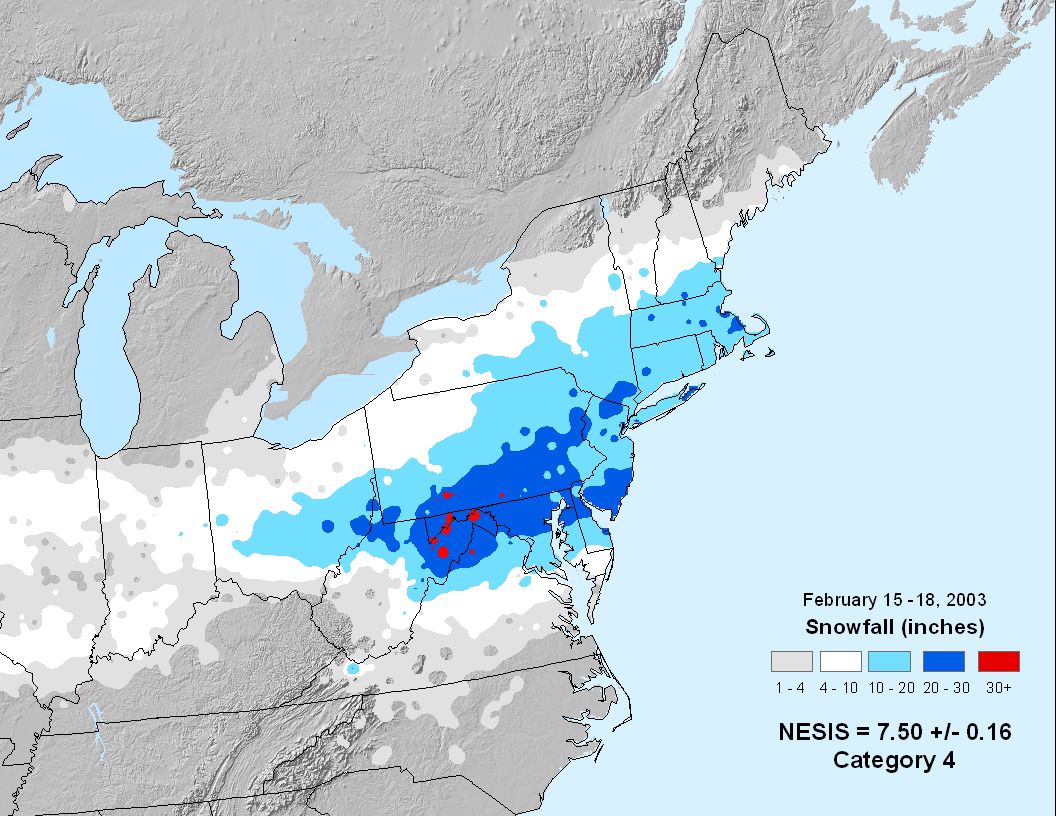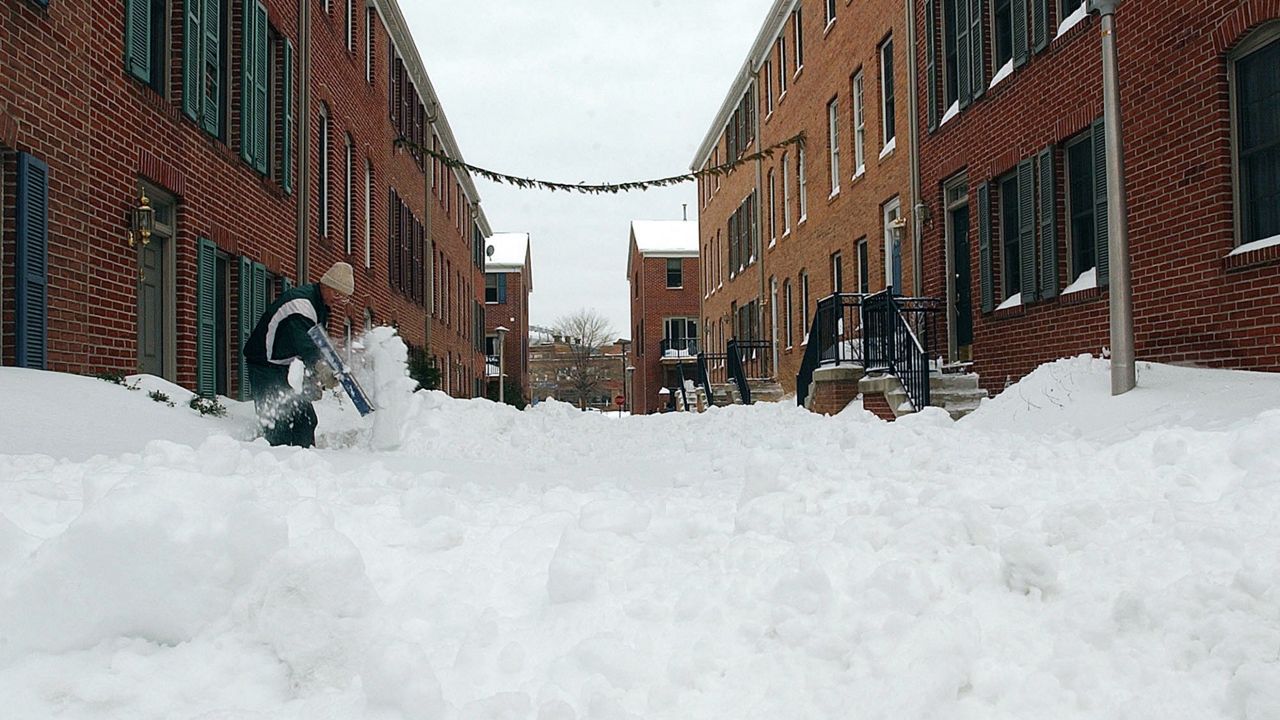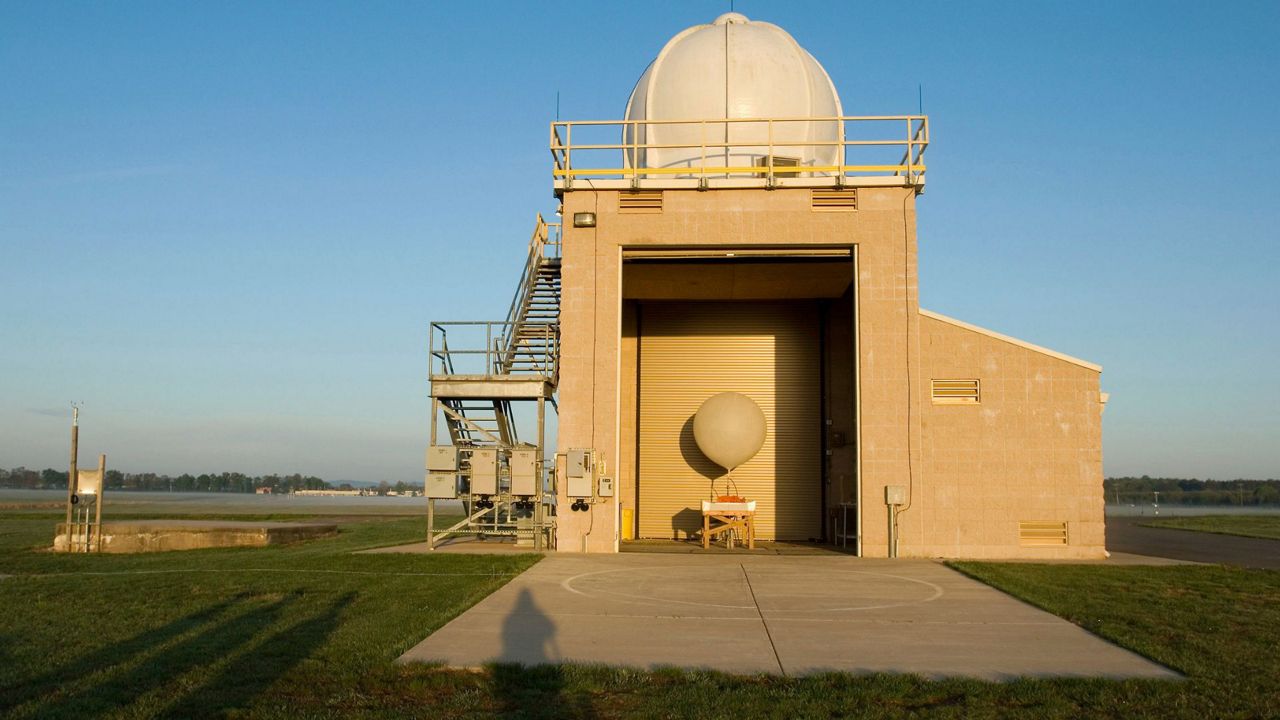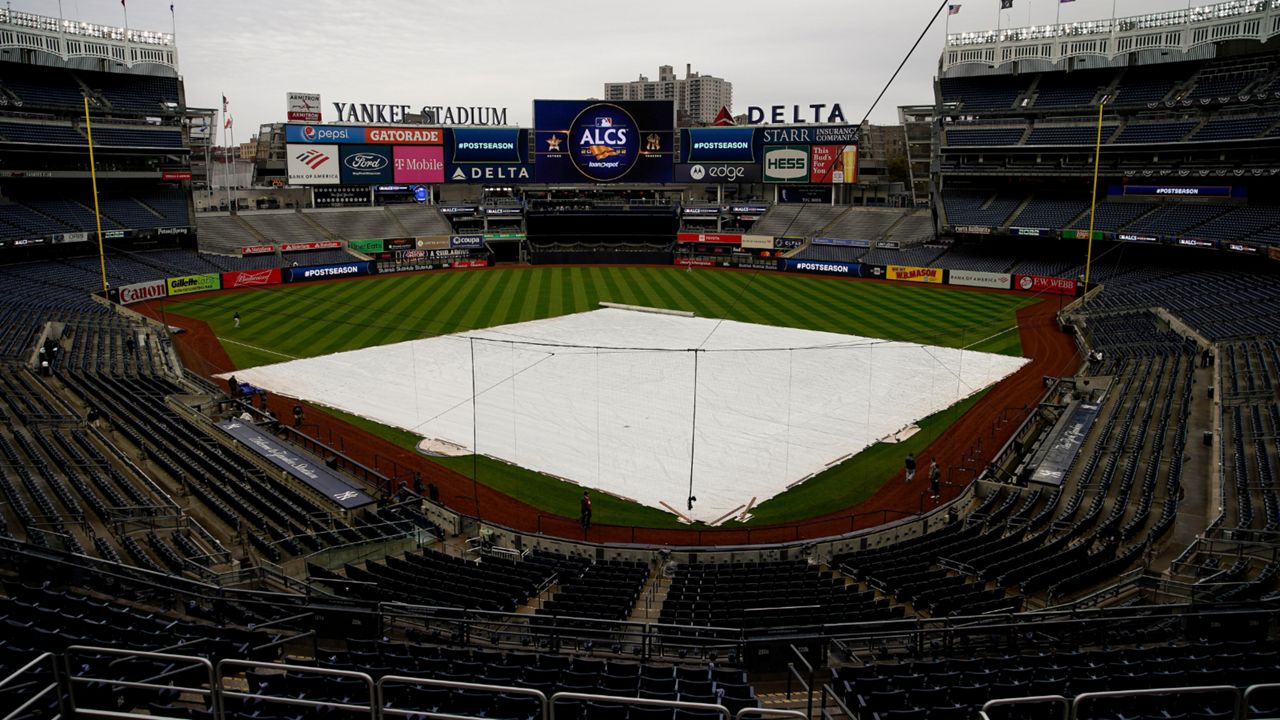This year marks the 20-year anniversary of the 2003 Presidents Day Blizzard that crippled much of the Mid-Atlantic and Northeast.
Cities such as Baltimore; Washington, D.C.; Philadelphia; New York City and Boston received snowfall amounts of 20 to 28 inches. It ranks No. 6 on the list of the most impactful snowstorms in the Northeast. These are the top three.
These were the observed snowfall totals when it was all said and done.

Compared to other notable northeast snowstorms, the 2003 Presidents Day Blizzard did not fit the bill of a classic nor’easter.
The first driving force of the storm was the incredibly large arctic area of high pressure the moved across Southern Canada and Northern New England the weekend preceding the storm. Across the Capital Region, high temperatures barely made its way into the single digits the day before the blizzard.
At the same time, heavy snow expanded from the Ohio Valley into the Mid-Atlantic with a weak area of low pressure over Tennessee. At that point, there was no significant low pressure system along the Atlantic coast.
Later in the evening on Feb. 16, the day before Presidents Day, low pressure formed east South Carolina and snow really ramped up across the Metroplex from Baltimore to New York City. What’s interesting is that as the low moved east-northeastward up the coast, it did not deepen further.
The strength of the artic high pressure system centered over Maine, along with the approaching low, created a strong pressure gradient. That created blizzard conditions along the coast and into New England.
While the Capital Region didn’t get the brunt of the heavy snow, Albany still got a healthy storm total of 12.9 inches. Some parts of the Hudson Valley and western New England received upwards of two feet of snow.
The 2002-2003 winter was one of the snowiest winters on record in Albany. A seasonal grand total of 105.4 inches officially fell in Albany.
Our team of meteorologists dives deep into the science of weather and breaks down timely weather data and information. To view more weather and climate stories, check out our weather blogs section.









